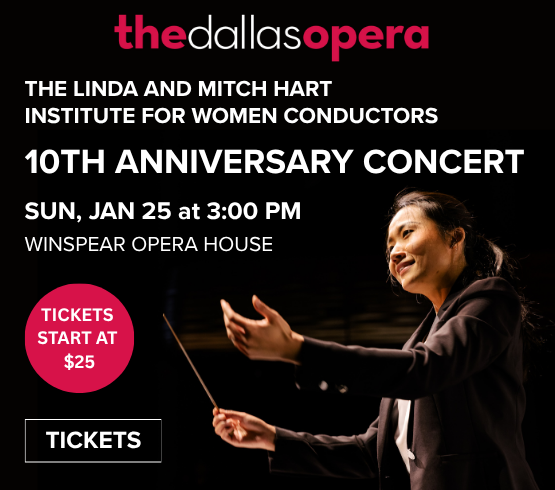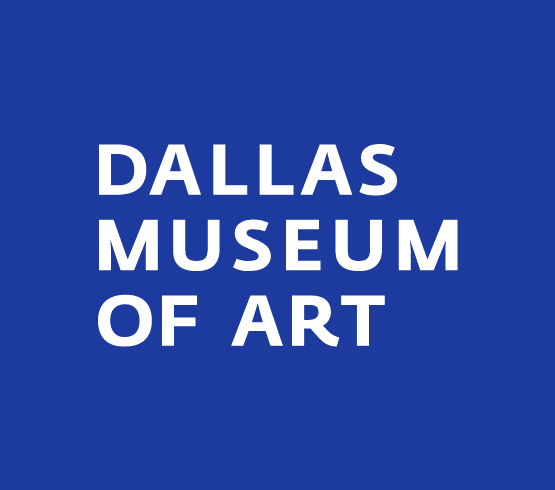No doubt about it, the big event of the Dallas Symphony Orchestra’s coming season arrives near the start: Music director Fabio Luisi and company, going where no U.S. orchestra has gone in decades, will perform Richard Wagner’s epic The Ring of the Nibelung.
“I am blessed,” Luisi said. “I am very fortunate. … This is part of my job as a music director. I have to explore a very large offer of music through the centuries and through the different styles. This is what brings me close to my orchestra, my audience and the community.”
After the dust settles from the Ring’s final cataclysm, Luisi will turn toward the exuberance and lyricism of Mozart’s “Jupiter” Symphony and Beethoven’s Violin Concerto (Nov. 22-24). After savoring the soulfulness of Anton Bruckner’s Symphony No. 7 (Jan. 30-Feb. 2), the orchestra and its leader will look back at Beethoven, as represented by the tumult and triumph of his Fifth Symphony (Feb. 6-9).
Luisi won’t limit himself to Germanic classics, though. He’ll conduct a string of contemporary pieces, including a world-premiere work by the Dallas Symphony’s composer in residence, Sophia Jani (March 6-9). A native of Germany, Jani earned a master’s in composition at the Yale School of Music.
“I like how she writes,” Luisi says. “It’s a very concise way to write music. … It’s simple, but in a good form of simplicity. It’s music you can understand at the first hearing. It’s important to have such a composer with us.”
The orchestra’s principal woodwinds, usually tucked away in the center of the group, will step out front for a brand-new concerto by American composer Sean Shepherd (April 17-19). Whereas some composers put melody in the forefront to carry listeners along, Shepherd’s music tends to be “a little more abstract,” said Katie McGuiness, the Dallas Symphony’s chief artistic officer. “He’s more about the experience and the atmosphere.”

1 ⁄7
Giedrė Šlekytė; Photo by Vittorio Greco.

2 ⁄7
Dallas Symphony Orchestra performing Wagner’s The Ring of the Nibelung. Photo by Sylvia Elzafon, courtesy of the DSO.

3⁄ 7
Jaap van Zweden; Photo by Brad Trent.

4 ⁄7
Dallas Symphony Orchestra performing Wagner’s The Ring of the Nibelung. Photo by Sylvia Elzafon, courtesy of the DSO.

5 ⁄7
Dallas Symphony Orchestra performing Wagner’s The Ring of the Nibelung. Photo by Sylvia Elzafon, courtesy of the DSO.

6 ⁄7
Emily Levin; Photo courtesy of DSO.

7 ⁄7
John Storgårds; Photo courtesy of DSO.
“He always felt the concert hall…wasn’t his place,” McGuinness explained. “He was a jazz musician, and that wasn’t his thing.” Bowers’ perspective changed when saw movies accompanied by live orchestras. “He would hear (scores by) Hans Zimmer, he would hear Howard Shore, he would hear John Williams. He could relate to that music. That allowed him to enter the world of the symphony orchestra.”
For a Younger Self, a violin concerto, evokes Bowers’ “journey in music—and his journey specifically in symphonic music and classical music,” McGuinness said. “He’s trying to tell his younger self, ‘You can write for symphony orchestra. This is the path that lies ahead of you.’ It’s really quite beautiful, how he has structured the whole concerto.” The soloist will be Charles Yang, violinist of the genre-bending group Time for Three, who premiered the concerto with the Los Angeles Philharmonic in 2020.
Giedrė Šlekytė, a prize-winning Lithuanian conductor, will make her U.S. debut in a program including Heliosis by a young Austrian composer, Hannah Eisendle (Jan. 23-26). Heliosis, McGuinness said, is “so lush and cinematic … a real crowd-pleaser.” Berlioz’s famously manic Symphonie Fantastique caps off the program.
A guest from Finland, John Storgårds, will double as violinist and conductor (April 3-6). He’ll play both roles in Beethoven’s Romance in F major and Keith Jarrett’s Elegy. In between, he’ll conduct the Harp Concerto in C minor by the long-neglected Henriette Renié, a harpist and composer born in Paris in 1875. Emily Levin, the Dallas Symphony’s principal harpist—and a champion of Renié’s music—will solo.
Among notable soloists, pianist Jean-Yves Thibadet will bring his trademark vivacity to Gershwin’s Concerto in F (Nov. 14-17); violinist Augustin Hadelich will lavish his red-blooded tone on Brahms’ Violin Concerto (Jan. 30-Feb. 2); the dynamic Hélène Grimaud will solo in Robert Schumann’s Piano Concerto (March 14-16); and violinist Leonidas Kavakos will lend his intensity to Dmitri Shostakovich’s Violin Concerto No. 1 (May 22-24).
Shostakovich encompassed some of the 20th century’s greatest upheavals in his works. Kavakos’ concerto performance, part of a program led by Israeli conductor Ilan Volkov, will belong to a three-part mini-series commemorating the 50th anniversary of the long-suffering composer’s death.
Jaap van Zweden, who led the Dallas Symphony from 2008 to 2018, will return for a program including Shostakovich’s best-known work, the titanic Symphony No. 5 (May 1-3). Jonathan Heyward, the Baltimore Symphony Orchestra’s young music director, will conduct Shostakovich’s more sardonic Symphony No. 9 (May 15-18).
The orchestra is already looking ahead to next season, when it celebrates its 125th anniversary—citing a 1900 concert by 40 musicians, led by a German immigrant named Hans Kreisser, as its debut. In an initial tip of the hat, McGuinness explained, conductor Volkov’s May program will include Beethoven’s “Eroica” Symphony, which late-1940s music director Antal Dorait led on his last concert at the helm.
Before the orchestra gets to its 125 birthday, though, the immediate milestone is the Ring’s completion this fall. Siegfried introduces the intrepid youth the gods hope can rescue them from a curse brought on the lust for power. In Twilight of the Gods, the effort fails, and the warrior Brünnhilde finally immolates herself, torching the gods and their fortress, Valhalla, along with her.
Thinking back to last May’s opening installment, the culmination of several years’ planning, McGuinness said that “everyone felt proud and happy that we finally had that moment of getting it started,” and the audience received the performances “so enthusiastically.” But for the next go-round, the orchestra’s leaders have a few refinements in mind, including a little more rehearsal time for the orchestra.
“Maestro Luisi is, I think, the most calm, level-headed, peaceful soul I think I’ve ever met,” McGuinness said. “That is such a blessing, because that’s the energy you want from your music director. He never gets flustered, he never gets stressed, he doesn’t panic.”
Nevertheless, she added, the results testified to the storytelling power of Wagner’s music. Despite the limited theatrical elements—mainly lighting and the cast members’ stage presence—the audience could follow the goings-on.
“There were no costumes, there were no sets, there were no visuals that people could rely on” McGuinness continued. “Because we didn’t provide that, people then used their imagination. It was so nice to hear patrons come out saying, ‘I could visualize Brünnhilde racing away on her horse!’”
—STEVEN BROWN






